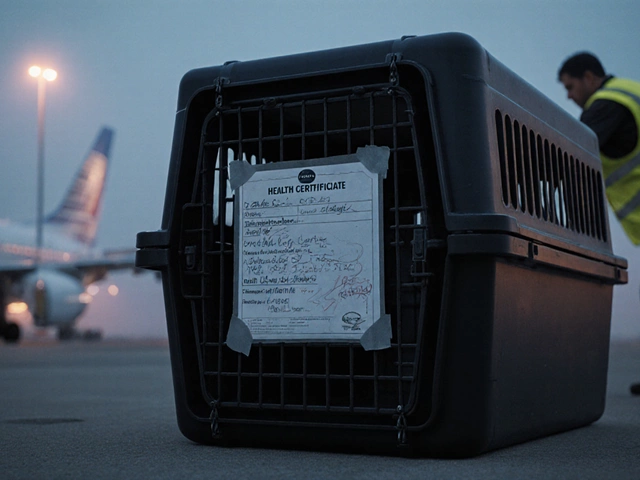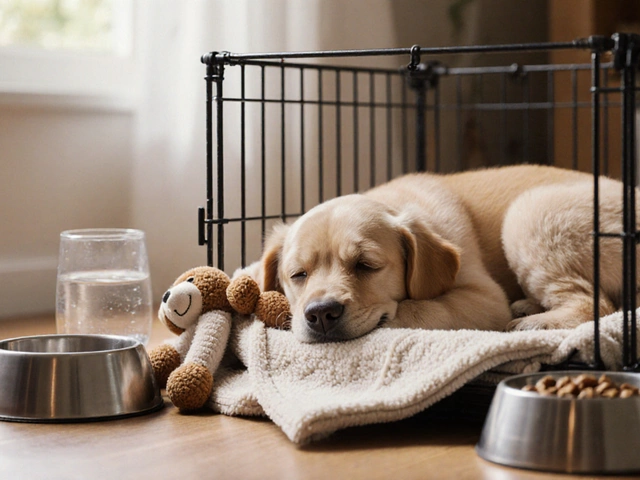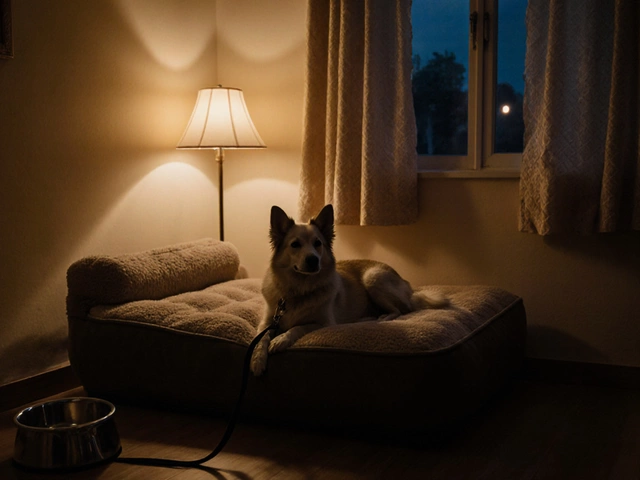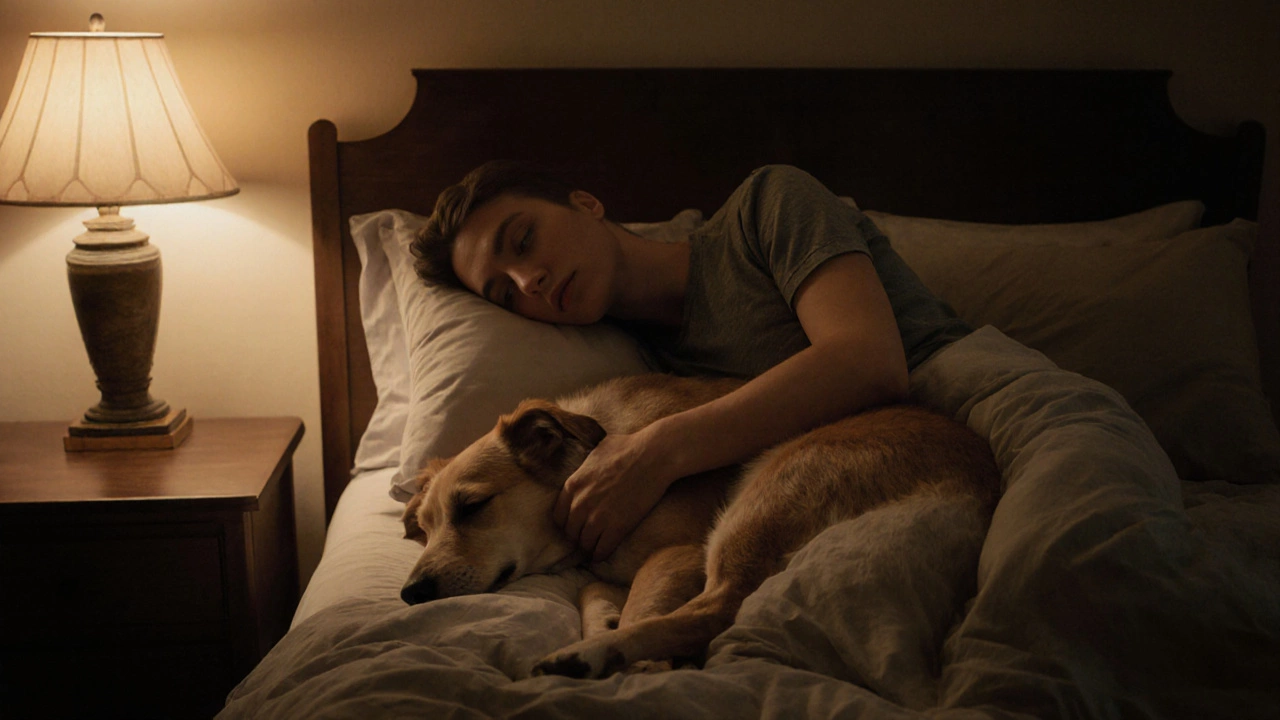
Dog Sleep Comfort Calculator
How Comfortable Is Your Dog's Sleep Setup?
Answer these questions to get personalized recommendations for better sleep for both you and your dog
Ever caught your furry friend curled up next to you at night and wondered what’s going on in that puppy brain? You’re not alone - many owners ask why their dog is a domesticated animal that thrives on social connections and instinctive pack dynamics prefers the human bed over a fancy dog bed a cushioned sleeping spot designed specifically for canine comfort. Below we break down the science, emotions, and practical tips that explain this cozy habit.
Pack Instinct: Dogs Are Born Social
From the moment a puppy opens its eyes, it’s looking for a pack leader. This pack instinct the evolutionary drive that pushes canines to stay close to group members for safety and cohesion is why they gravitate toward the safest spot in the household - usually the human’s sleeping area. In the wild, wolves curl up together to keep warm and protect each other from predators. Your owner the human caretaker who provides food, shelter, and social interaction essentially becomes the alpha of that pack, and the bed is the den.
Oxytocin: The Love Hormone That Binds You
Physical contact triggers a surge of oxytocin a hormone that promotes bonding, reduces stress, and enhances feelings of trust in both dogs and humans. Studies from the University of Helsinki (2023) showed that when owners pet their dogs for just five minutes, both parties experience a measurable rise in oxytocin levels. Sleeping side‑by‑side maximizes this effect, turning a simple cuddle into a biochemical handshake that says, “We’re in this together.”
Comfort: Warmth, Security, and Familiar Scents
Comfort isn’t just about a soft surface. Dogs are highly attuned to temperature, scent, and audible rhythms. Your heartbeat and breathing create a gentle white‑noise that soothes a nervous pup. The shared body heat keeps them at an optimal temperature regulation the process by which a dog maintains a stable core temperature during sleep, especially useful for short‑haired breeds that lose heat quickly. Additionally, your skin’s scent is a permanent reminder of safety, reinforcing the pack leader role.

Health Benefits of Co‑Sleeping
Co‑sleeping can actually support a dog’s physical health. When a dog feels secure, it enters deeper REM cycles, which aid in memory consolidation and muscle repair. A 2022 Australian veterinary study found that dogs that regularly share a bed with their owners displayed fewer sleep‑related stress markers, such as cortisol, compared to those that slept alone. Moreover, close proximity can help owners notice early signs of illness - a sudden change in breathing or restlessness is more obvious when the dog is right beside you.
When Close‑by Sleeping Might Be a Problem
It’s not all rainbows. Some dogs develop anxiety if they can’t be near you, leading to separation issues. Large breeds may unintentionally take up too much space, causing discomfort for the human sleeper. Dogs with medical conditions like arthritis might find the soft mattress better than a rigid floor, but a too‑soft bed could worsen joint pain. Knowing the limits helps you strike a balance between bonding and personal space.
Choosing a Dog Bed That Complements Co‑Sleeping
If your pup likes to join you but you need your own space, a well‑placed dog bed can be a win‑win. Look for these features:
- Orthopedic support - Memory foam or gel layers help with joint health, especially for senior dogs.
- Temperature control - A breathable cover or cooling gel keeps the bed comfortable year‑round.
- Size and shape - A round or pillow‑style bed lets the dog curl up without extending far onto the human mattress.
- Easy cleaning - Removable, machine‑washable covers reduce odors and keep hygiene high.
Placing the dog bed at the foot of the master bed gives your dog a familiar space that’s still close enough for a quick snuggle while preserving your own sleep surface.
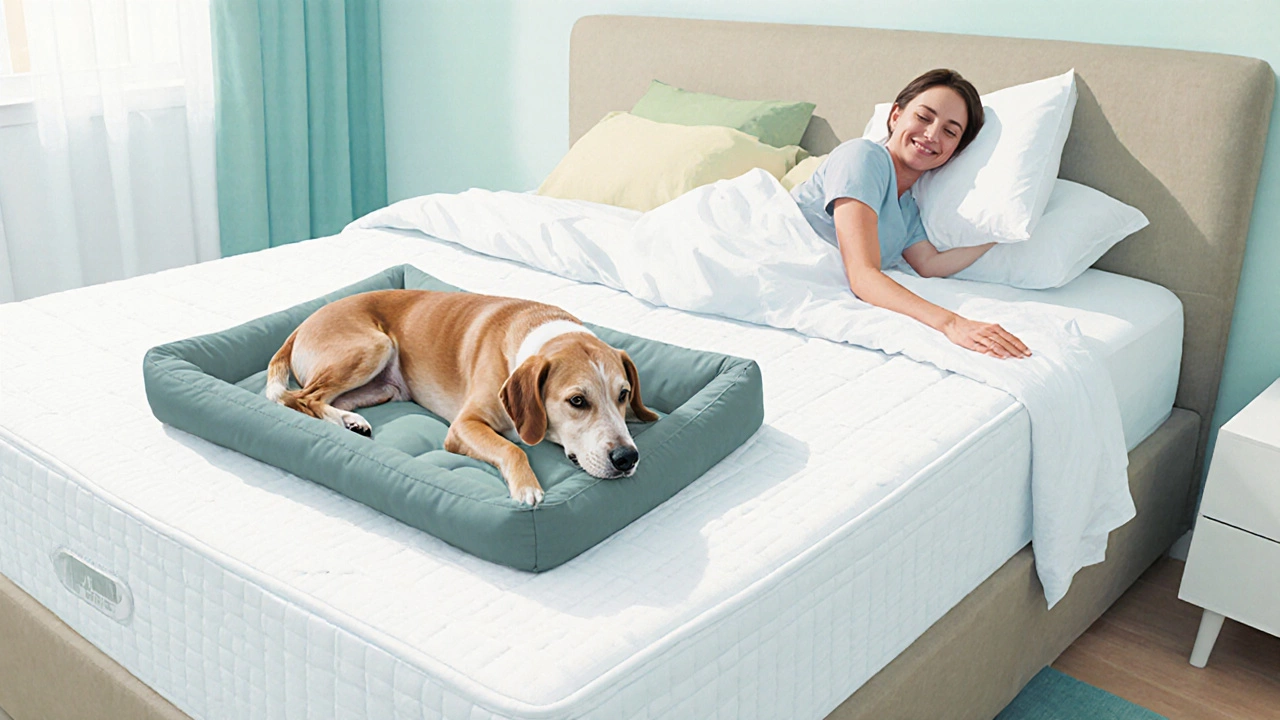
Quick Checklist: Making Nighttime Cozy for Both of You
- Observe your dog’s preferred sleeping position - curled, sprawled, or side‑by‑side.
- Maintain a consistent bedtime routine to reinforce security.
- Provide a dedicated dog bed with orthopedic support near your own bed.
- Monitor for signs of stress or discomfort (whining, pacing) and adjust the arrangement.
- Keep the bedroom temperature between 65‑72°F (18‑22°C) for optimal sleep cycle the natural progression through light, deep, and REM sleep stages for both species.
If you follow these steps, you’ll likely notice fewer nighttime wake‑ups, a calmer pup, and a stronger bond - all thanks to understanding why your dog chooses to share your bed.
Comparison of Common Sleeping Spots
| Reason | With Owner (Bed) | Dog Bed | Floor/Tile |
|---|---|---|---|
| Warmth | High - body heat shared | Medium - insulated cushions | Low - cold surface |
| Security | High - pack leader nearby | Medium - familiar scent | Low - isolated |
| Bonding (oxytocin boost) | Very high | Low | None |
| Joint support | Variable - depends on mattress | High - orthopedic design | Low - hard surface |
| Space for owner | Reduced | Full | Full |
Frequently Asked Questions
Is it okay for my dog to sleep in my bed every night?
Yes, as long as both you and the dog get enough restful sleep and there are no health concerns (e.g., allergies, joint issues). Many owners find the extra bonding beneficial.
What if my dog hogs the whole bed?
Try placing a dog bed at the foot of the mattress. Teach a “go to bed” cue and reward the dog for staying in its spot. Consistency usually shifts the habit.
Can sleeping with my dog cause allergies?
If you’re sensitive to dander, use hypoallergenic bedding covers and vacuum regularly. Some owners keep a HEPA filter in the bedroom to minimize airborne allergens.
Why does my dog whine at night when I’m not in the bed?
Whining often signals anxiety or a need for reassurance. Try a short bedtime routine that includes petting and a calming cue, then gradually increase the distance.
What type of dog bed is best for a senior dog?
Look for orthopedic foam or memory‑gel beds with a low profile so the dog can get in and out easily. A washable, non‑slip cover adds extra comfort.


